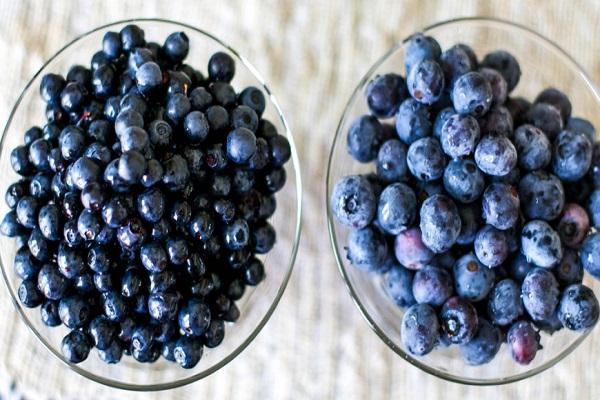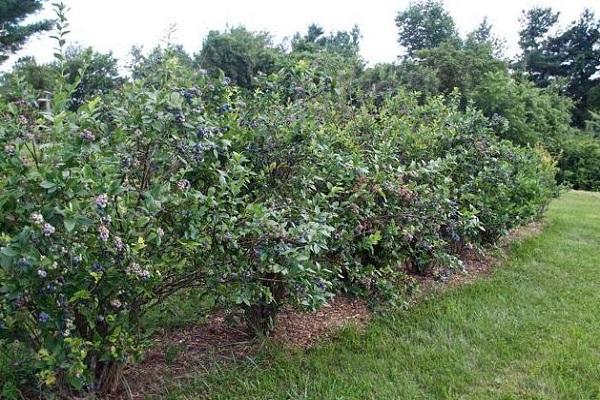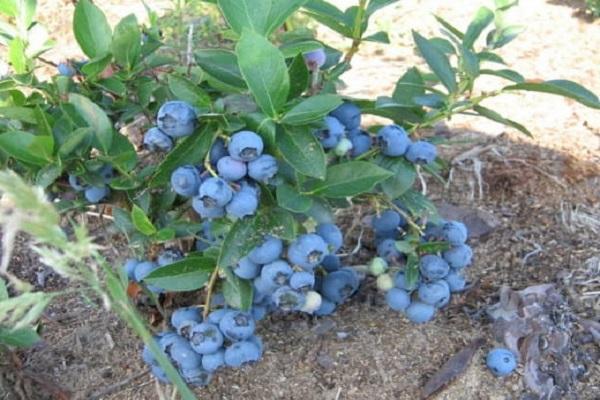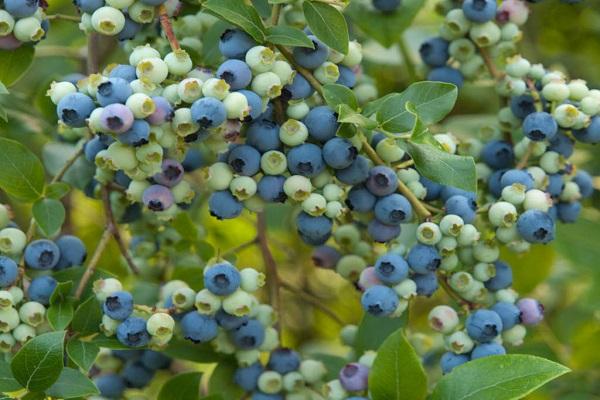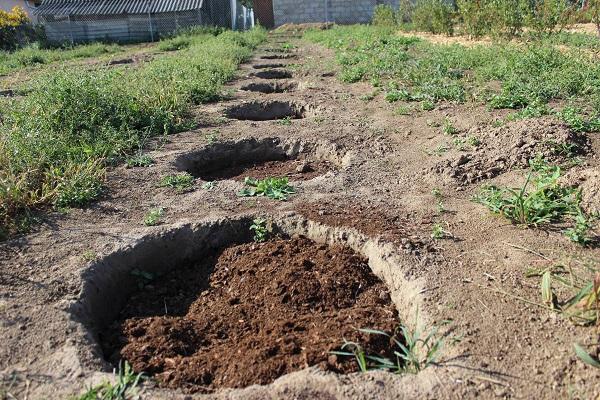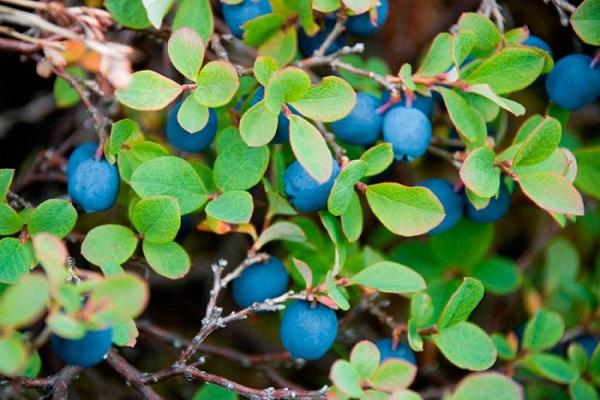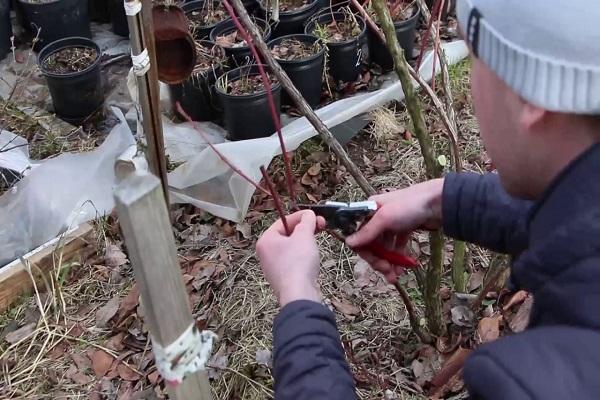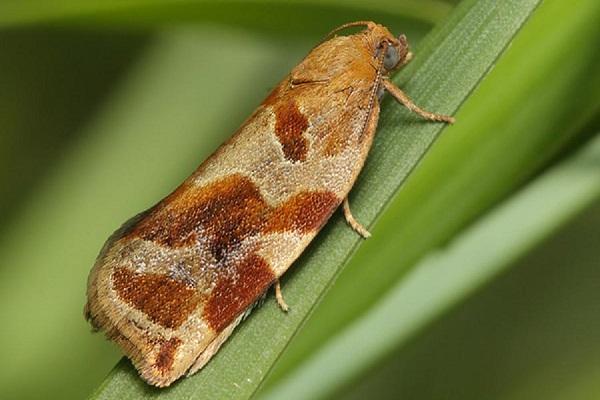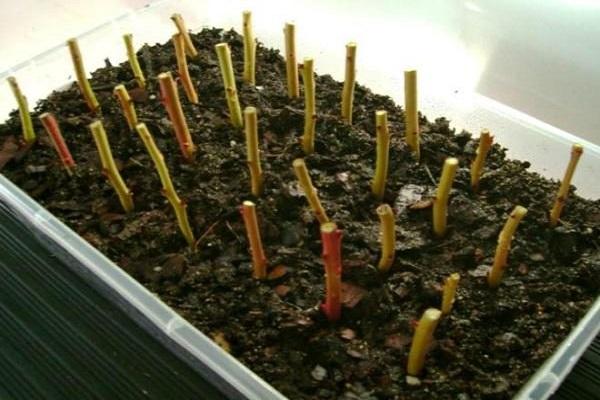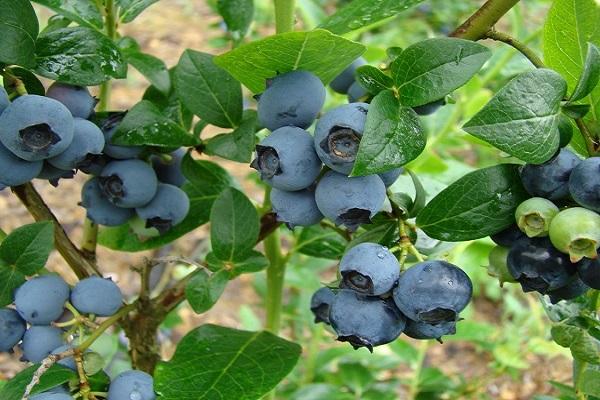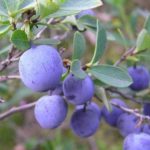Many summer residents who have their own gardens grow berries. At the same time, some of them plant blueberries in their garden plot. Before you start growing such a plant, you need to familiarize yourself with exactly how blueberries grow and how to plant and grow them in the garden.
- General information about the plant
- Differences between blueberries and blueberries
- Popular varieties
- Can it be grown in a summer cottage?
- Growing garden blueberries
- Selection of planting material
- Choosing a landing site
- Preparing the hole for planting
- The process of planting blueberries in open ground
- Features of growing in a greenhouse
- Further care for blueberries
- Rules for feeding and watering
- How and when to prune bushes
- Preparing for winter
- Description of the main diseases and pests of the bush
- Breeding culture
- Specifics of cultivation in different regions of Russia
- Harvesting
- Conclusion
General information about the plant
To become familiar with the main features of bush blueberries, you need to study general information about this berry.
Blueberries are tall shrubs that can grow up to one and a half meters. They begin to bear fruit in mid-summer, when small berries appear on all the bushes. The average yield from each blueberry bush is 7-8 kilograms. All fruits are collected in large and oblong clusters. A distinctive feature of the plant is the taste of its fruits. They are sweet and do not have a sour taste. The surface of the fruit is covered with a bluish skin, which darkens after ripening.
Differences between blueberries and blueberries
Many gardeners who have recently started growing berries cannot distinguish blueberries from blueberries. It is recommended that you familiarize yourself with the distinctive features of these garden crops in advance so as not to confuse them with each other in the future. These plants may differ:
- Stems. The blueberry bush has huge stems that are 80-90 centimeters larger than blueberries. The maximum height of blueberry seedlings is only 40-45 centimeters, and blueberry seedlings - one and a half meters.
- Shape of bushes. A blueberry seedling is a creeping plant that grows on the surface of the soil. Blueberry bushes grow upright.
- Fruit. Another distinctive feature of plants is the ripe harvest. Blueberries have an oblong shape, while blueberries have a spherical shape. Berries can also be distinguished by color. Blueberries have much darker fruits.
- Taste qualities. Blueberries have a different taste.Its berries are sweet, and blueberries have a characteristic sourness.
Popular varieties
Before you start growing blueberries, you need to familiarize yourself with the most famous varieties of berries. Popular plant varieties include:
- Duke. Most often, this variety is grown in the West, but some gardeners from the CIS countries also plant Duke. This is a late-ripening variety, the berries of which ripen at the end of July. Duke fruits are disease resistant and have a pleasant aroma.
- Bluecrop. This is a low-growing variety that is suitable for growing in small gardens. The advantage of Bluecrop is considered to be its productivity, which allows you to collect more than ten kilograms of ripe berries from a plant.
- Leningrad giant. A vigorous and high-yielding plant that is resistant to frost and high humidity. The yield is 7-9 kilograms of berries.
- Bonus. A tall variety that can grow up to two meters. It differs from other varieties of blueberries in the size of ripe berries, the diameter of which is 25-30 millimeters.
- Putte. Some prefer to plant Putte blueberries in the garden, which have a stable yield of 3-4 kilograms of berries from each bush. The harvested fruit is used to make jams and fruit compote.
Can it be grown in a summer cottage?
Many people who are planning to start growing berries are interested in whether it is possible to plant blueberries in their summer cottage. Previously, this plant was not planted so often, but now many homeowners plant blueberries in their gardens. This became possible thanks to breeders who developed berry varieties suitable for cultivation in any climatic conditions.
Growing garden blueberries
To grow blueberries, you need to learn how to plant them correctly.
Selection of planting material
The productivity of planted bushes directly depends on the quality of planting material. Experienced gardeners recommend buying seedlings with a well-formed root system. The height of such seedlings should not be less than fifteen centimeters. The shoots of the seedling selected for transplantation should have several formed green leaves without signs of disease.
Choosing a landing site
It is necessary to select the right site for further cultivation of planted blueberries. The selected landing site must meet the following requirements:
- sun exposure throughout the day;
- location of groundwater at a distance of 60-80 centimeters from the top layers of soil;
- protection from strong gusts of wind.
Also, when choosing, you need to take into account the compatibility of the berry with other plants. It cannot be planted in areas where tomatoes, strawberries, cucumbers or potatoes were previously grown.
Preparing the hole for planting
Before planting berries in open ground, a special planting hole is made. Experts recommend preparing a hole for planting in the fall, before the cold weather begins. However, some prefer to do this in early spring. In this case, you need to dig a hole two weeks before planting. The depth of the planting hole should be about 10-15 centimeters, and the width - 8-10 centimeters.
The process of planting blueberries in open ground
Before planting the plant, a drainage layer is placed in the dug hole. To do this, pine branches and wood chips are placed at the bottom. Peat mixed with sawdust, pine humus and sand is poured on top. Then a blueberry seedling is carefully placed in the prepared hole and sprinkled with earth.
Features of growing in a greenhouse
Before planting blueberries in an outdoor garden, some gardeners grow young seedlings in a greenhouse. In greenhouse conditions, the bushes grow for one and a half years, after which they must be transplanted into open ground.
When growing berries in a greenhouse, you need to regularly water them and feed them with fertilizers. You also need to make sure that the blueberries have enough lighting. To do this, additional lighting lamps are installed near the bushes.
Further care for blueberries
In order for the planted berries to bear fruit normally, the bushes will have to be properly cared for. Therefore, it is recommended to understand in advance the recommendations for caring for seedlings in spring and summer.
Rules for feeding and watering
Blueberries are considered a moisture-loving berry that needs to be watered periodically. Irrigation should begin 1-2 weeks after transplanting the seedlings into the garden. Watering is carried out at least twice a week. In July and August, when the heat begins, the amount of moisture is increased several times. At the same time, at least seven liters of water are consumed for each bush. Room temperature water must be used.
How and when to prune bushes
Caring for garden blueberries should be accompanied by the formation of seedlings. Experienced gardeners recommend shaping planted blueberry bushes every year in early spring. The first pruning is carried out when the seedlings are 3-4 years old. In this case, only 4-5 of the strongest fruit-bearing shoots are left. In the future, it will be necessary to remove branches that are more than five years old.
Preparing for winter
Agricultural technicians advise preparing the planted blueberry seedlings for winter in advance so that they do not freeze after the onset of cold weather. To do this, you will have to deal with the insulation of garden crops.Near each bush, tall metal rods are installed, which are covered with durable oilcloth. This covering material should protect the berries from low temperatures.
Description of the main diseases and pests of the bush
Gardeners who decide to grow blueberries in their dachas periodically encounter dangerous diseases and pests that can worsen yields. Common diseases include:
- Tracheomycosis. People who grow blueberries in the Kuban often encounter tracheomycosis wilt. This fungal disease leads to yellowing of the foliage and drying out of the bush. Alirin and Fitosporin will help get rid of tracheomycosis.
- Phyllosticosis. If grayish spots appear on the surface of the foliage, it means the plant has phyllostictosis. Fungicidal drugs will help get rid of the disease. To prevent the appearance and development of this disease, the berries must be replanted to a new place every 5-6 years.
- Septoria. Small brownish spots on the leaf blades indicate the development of septoria. Bordeaux mixture will help cure the disease.
Also, dangerous pests can appear on plants, which lead to seedlings withering. Most often, berries are attacked by:
- leaf rollers;
- moths;
- jaundice;
- shooters.
Breeding culture
Many novice gardeners are interested in the profitability of blueberry cultivation. Growing this garden crop is profitable, since from one bush you can get many cuttings, which in the future are planted separately. All cuttings collected for further planting must first be prepared. To do this you need:
- clean them from the exfoliated layer of bark;
- cut off the lower leaves;
- treat each cutting with a nutrient mixture to stimulate growth.
Specifics of cultivation in different regions of Russia
It is recommended to familiarize yourself with the peculiarities of blueberry cultivation in various regions of the Russian Federation.
People living in the northwest and in Siberia or the Urals need to take more careful care of their berries. This region has harsh winters and therefore the bushes must be prepared in advance for wintering. In early autumn, fertilizers are added to the soil and structures are created to shelter the planted seedlings.
The Krasnodar Territory and Rostov Region have favorable climatic conditions and therefore it is easier to care for blueberries. It is not necessary to cover the seedlings for the winter, since the winters here are not harsh.
Harvesting
Many people are interested in how long it takes for the berries to ripen. They ripen within a month and a half, and therefore most often the harvest of the ripe crop is carried out in mid-summer. However, it all depends on the characteristics of the variety, since some varieties of berries may ripen earlier or later. When picking berries, it is contraindicated to use mechanical tools, as they can damage the seedlings. Therefore, ripe berries must be carefully picked by hand.
The harvested crop is immediately transferred to a dark room. The fruits spoil quickly and therefore must be used within 3-4 days.
Conclusion
Many gardeners are engaged in growing blueberry bushes. Before planting, you need to familiarize yourself with how blueberries are planted in your summer cottage and understand the planting scheme for this garden crop.

